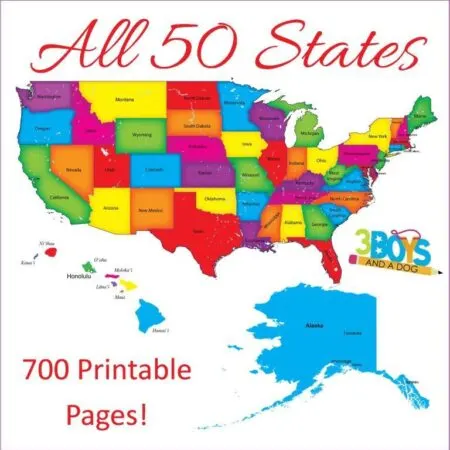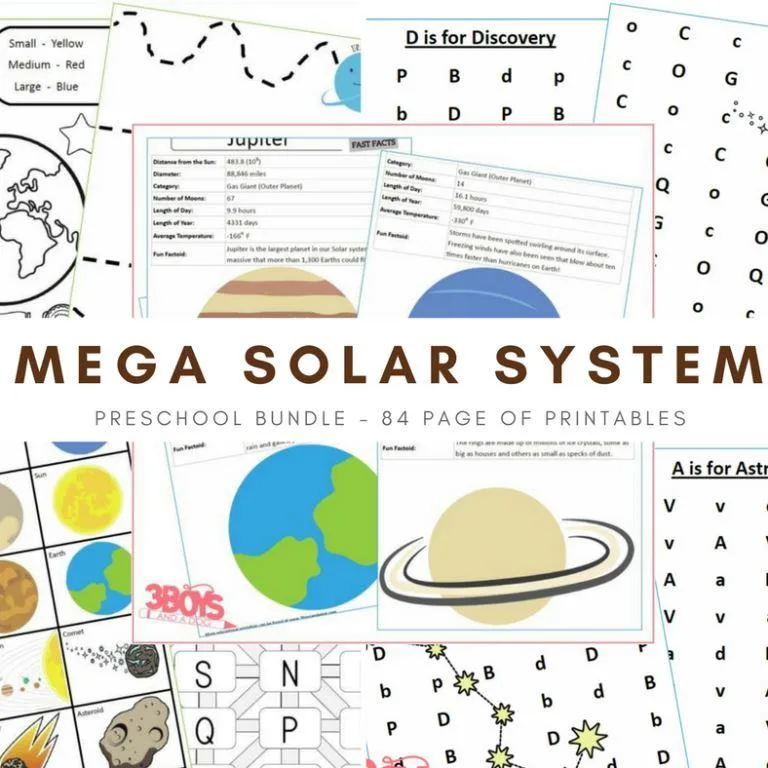As parents, educators, and caregivers, we’re always on the lookout for effective ways to boost our children’s growth and development. Often, the most potent tools are those that are simple, engaging, and seamlessly integrated into our everyday routines.
One such tool is this What Happened activity—a simple but powerful exercise that can significantly enhance a child’s language skills and imagination.
Designed for children aged four years and above, this activity promotes expressive language, triggers curiosity, and fosters creativity.

In the “What Happened” activity, children are presented with various images and encouraged to explore the stories behind them. The scenario could be as simple as a man running, a child crying, a dog sleeping, or a car broken down at the side of the road.
Children are then asked to narrate what’s happening in the picture, speculate on what might have caused the event, and predict what might happen next.
It’s a fun, interactive way to engage your little ones, and the best part is that it requires minimal materials—just a few pictures of everyday events.
Stay tuned as we delve deeper into this fascinating activity, exploring how it works, why it’s beneficial, and how you can incorporate it into your child’s daily routine.
Whether you’re a parent looking to enrich your child’s learning experience at home or an educator seeking innovative strategies for the classroom, the “What Happened” activity offers a valuable resource for nurturing young minds.
The Skills Enhanced by “What Happened?” Activity
The “What Happened?” activity is a powerful tool for child development, specifically honing in on two fundamental areas: language skills and imagination.
Let’s delve into how this activity enhances these skills and why they are so crucial in real-life scenarios.
Skills Enhanced By This Activity:
Language Skills Enhancement
Language skills encompass a variety of abilities, including vocabulary usage, sentence construction, verbal expression, comprehension, and the ability to communicate effectively. The “What Happened?” activity directly targets these areas.
When children are asked to describe what’s happening in a picture or what might happen next, they need to find the right words and phrases to convey their thoughts. This encourages them to reach into their vocabulary bank and use it actively, which can lead to its expansion over time.
Additionally, the demand to explain a sequence of events helps children practice constructing sentences and using grammar correctly. It also enhances their verbal fluency and expressiveness, as they learn to articulate their thoughts clearly and coherently.
Imagination Skills Enhancement
Imagination is the ability to create, innovate, and think beyond the confines of reality. The “What Happened?” activity stimulates this skill by asking children to speculate about the causes and consequences of an event.
When children try to figure out what led to the scenario in the picture or what might happen next, they’re essentially creating their own stories. This process requires them to think creatively, consider various possibilities, and make connections between different events, all stimulating and enhancing their imaginative abilities.
Real-Life Applications of These Skills
The beauty of these skills is that they’re not just academic; they have real-world applications that can help children navigate life more effectively.
Language skills are essential for effective communication — a vital aspect of personal, academic, and professional success.
Strong language skills will always be beneficial, whether it’s expressing their feelings, sharing their ideas in a group project at school, or eventually presenting a proposal in their future workplace.
Imagination, on the other hand, is the cornerstone of creativity and problem-solving. It allows children to think outside the box, innovate, and find unique solutions to challenges.
Whether tackling a tricky math problem, coming up with an idea for a school project, or inventing a new game, a well-developed imagination can empower them in many ways.
By engaging your child in the “What Happened?” activity regularly, you’ll not only provide them with a fun and engaging pastime but also equip them with essential skills that will serve them well throughout their lives.
Materials Needed for the “What Happened?” Activity
The beauty of the “What Happened?” activity lies in its simplicity. The only material you need is a collection of pictures depicting everyday events. But why are these pictures so crucial, what kind of images should you choose, and where can you find or create them?
The use of diverse images is key to the effectiveness of this activity. Each picture serves as a prompt, encouraging your child to delve into their imagination and articulate their thoughts.
By using various images, you ensure that your child encounters different scenarios, which can stimulate their thinking in various ways and enhance their ability to adapt their narratives to different contexts.
Suggestions for Types of Pictures
When selecting or creating pictures for this activity, consider images that depict relatable, everyday events. This could include a child playing with a dog, a family having dinner, a person planting a tree, or a broken bicycle by the roadside.
The aim is to choose images familiar to children but also have an element of ambiguity. This ambiguity will provoke curiosity and encourage your child to imagine what might have led to the event in the picture and what might happen next.
How Do Dinosaurs Go to School?How Do Dinosaurs Collection. 6 Books (HowHow Do Dinosaurs Count to Ten?How Do Dinosaurs Play with Their Friends?How Do Dinosaurs Get Well Soon?How Do Dinosaurs Learn to Read?
Where to Find or Create These Pictures
Finding pictures for this activity is easier than you might think. Here are a few sources:
- Children’s Magazines and Books: These often contain colorful, engaging images that can be used for this activity.
- Online Image Libraries: Websites like Unsplash, Pexels, and Pixabay offer a vast collection of free images. You can search for everyday scenarios and print out suitable ones.
- Family Photos: If you have a collection of family photos, these can provide a great source of familiar and relatable images for your child.
- Create Your Own: If you enjoy drawing, you can create your images. This also gives you the freedom to tailor the pictures to your child’s interests and experiences.
Remember, the goal is not to have perfect, high-quality images but to have a variety of scenarios that can spark your child’s imagination and encourage them to express their thoughts.
So, get creative, have fun, and watch as your child’s language skills and imagination flourish through the “What Happened?” activity.
Instructions for “What Happened?” Activity
Conducting the “What Happened?” activity is a straightforward process that can be broken down into simple steps.
Here’s a step-by-step guide on how to do it:
- Prepare the Materials: Gather your pictures, ensuring you have a variety of scenarios to keep the activity engaging. Make sure the images are large enough for your child to see clearly.
- Set the Scene: Sit comfortably with your child and ensure you both have a clear picture view. You want to create a relaxed and nurturing environment where your child feels free to express their thoughts.
- Present the Picture: Show your child the first picture and give them a moment to take it.
- Ask Open-Ended Questions: Start by asking your child to describe what they see in the picture. For example, you could say, “Can you tell me what’s happening in this picture?” Encourage them to describe as many details as possible.
- Encourage Speculation: Once your child has described the picture, encourage them to speculate about what might have led to the event in the image and what might happen next. You could ask, “What do you think happened before this?” and “What do you think will happen next?”
- Guide Their Thinking: Provide gentle guidance if your child struggles with these questions. You could suggest possibilities or ask leading questions to help them think about cause and effect.
- Repeat the Process: Repeat the process with different pictures, ensuring that the scenarios vary to keep your child engaged and challenged.
Children’s responses will vary widely based on their age, experiences, and imagination. Some children might come up with elaborate stories, while others might offer simpler explanations. All responses should be encouraged and celebrated.
If a child struggles to understand cause and effect, you can guide them. For example, if the picture shows a spilled ice cream cone on the ground, and the child struggles to explain what might have happened, you could say, “What usually happens when we’re not careful with our ice cream cone?” or “How does an ice cream cone end up on the ground?”
In all cases, remember that the goal of this activity is not to get the ‘right’ answer but to encourage creative thinking, enhance language skills, and foster an understanding of cause and effect. So, be patient, offer praise for effort, and most importantly, make the process fun and engaging for your child.
Benefits of the “What Happened?” Activity
The “What Happened?” activity serves as a potent tool in fostering a child’s cognitive development and enhancing their storytelling abilities. It promotes creativity, critical thinking, and language skills, all of which are crucial for a child’s overall growth.
Cognitive Development
Activities that involve reviewing and analyzing events contribute significantly to cognitive development. In the “What Happened?” activity, children are encouraged to observe an event (depicted in a picture), analyze it, and then articulate what they think might have happened before or after the event.
This process stimulates various cognitive abilities — observation, analysis, logical reasoning, prediction, etc. — and helps children better understand cause and effect, sequence of events, and problem-solving.
Creativity and Storytelling
Activities that involve creating stories based on prompts can significantly enhance a child’s creativity and storytelling abilities. The “What Happened?” activity precisely presents children with a visual prompt and encourages them to create their own narrative around it.
This process not only stimulates their imagination but also helps them develop their storytelling skills as they learn to construct coherent narratives, use descriptive language, and express their ideas creatively.
While the “What Happened?” activity seems simple, it has profound benefits that can contribute significantly to a child’s cognitive development and creative abilities. It’s a fun and engaging way to help children develop essential life skills.
More Language & Imagination Enhancement Activities
Alongside the “What Happened?” activity, there are a variety of other engaging activities designed to enhance children’s language and imagination skills.
Here are a few examples:
1. Story Cubes
Overview: Story cubes are dice with different images on each face. The aim is to roll the dice and create a story based on the images that come up.
How to Conduct: You can buy story cubes or make your own. To play, roll the dice and let your child create a story that includes all the elements shown on the faces of the dice. This activity can be made more challenging by adding more cubes or creating themes for the stories.
2. Picture Books Without Words
Overview: Picture books without words encourage children to interpret the images and create their narrative.
How to Conduct: Choose a wordless picture book and ask your child to tell you the story as they see it. Encourage them to describe the characters, settings, and events in detail. This activity enhances language and imagination, requiring children to articulate their interpretations creatively.
3. Puppet Shows
Overview: Puppet shows allow children to create characters and scenarios, enhancing both their creative thinking and language skills.
How to Conduct: Provide your child with puppets (or materials to make their own) and a puppet stage. They can then create their own stories, complete with dialogue and action. This can be a solo activity or something they do with friends or siblings.
4. Imaginative Role Play
Overview: Role play encourages children to think creatively, understand different perspectives, and use language in context.
How to Conduct: Set up different role-play scenarios – like a shop, a hospital, a spaceship, etc. Provide props where possible to stimulate the imagination. Your child can then act out different roles within these scenarios, using language appropriate to the setting and characters.
- Pretend Play Post Office
- Pretend Play Vet Clinic
- Pretend Play Popsicle Truck
- Pretend Play Construction
5. Storytelling Chain
Overview: A storytelling chain involves creating a story by each person adding a sentence or two. This activity encourages creative thinking and helps children learn how to build upon existing narrative structures.
How to Conduct: Start a story with a sentence like, “Once upon a time, in a jungle far, far away…” Then, your child adds their sentence. Go back and forth, each adding to the story. This can be done with just one child or in a group.
Each activity provides a fun and engaging way to stimulate your child’s imagination and enhance their language skills. They can be adapted to suit different ages and interests, ensuring that learning is always enjoyable and relevant.

The “What Happened?” activity is a simple yet highly effective tool for fostering children’s cognitive development, enhancing their storytelling abilities, and stimulating creativity. This activity encourages children to observe, analyze, predict, and articulate their thoughts – all crucial skills for their overall growth and development.
By engaging with pictures and creating narratives around them, children are learning to understand cause and effect and honing their language skills. They learn to express their thoughts coherently, use descriptive language, and construct logical narratives.
Additionally, the activity stimulates their imagination, encouraging them to think creatively and see beyond the obvious.
Shop My Learning Printables:
The following homeschool picks of mine can be found in my shop. Simply click the image that interests you!
While the benefits of this activity are profound, its beauty lies in its simplicity. It requires minimal materials and can be conducted anywhere, anytime. So, whether at home, in a park, or on a long drive, you can always pull out a picture and ask your child, “What happened?”
As parents, engaging in such activities with your children can provide insight into their thought processes and imagination. It’s an opportunity to guide their thinking, enhance their skills, and, most importantly, bond with them over shared stories and laughter.
So, give the “What Happened?” activity a try and watch as your child’s stories unfold, filled with their unique interpretations and boundless imagination. You’ll be amazed at the worlds they create and the insights they reveal, one picture at a time.















maggy, red ted art
Thursday 6th of September 2012
Simple and effective game to play with kids.
Thanks for sharing on Kids Get Crafty!
Maggy
Printabelle
Thursday 6th of September 2012
I love those prompts, very helpful! Thanks for linking!
Melissa
Tuesday 4th of September 2012
Thank you so much for blogging about education! I will be coming back here. May this be used to help many a child!